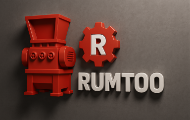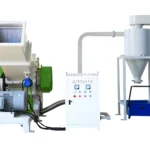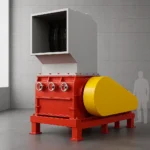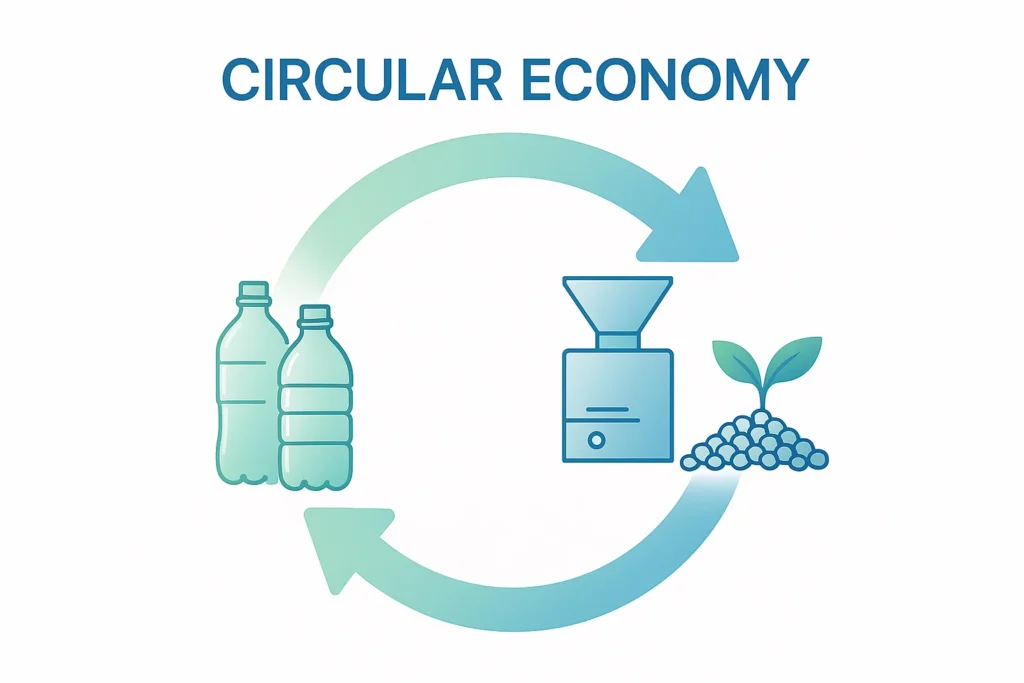Understanding the Plastic PET-Granulator: An Extensive Guide for Professionals in Industrial Recycling
In today's environmentally conscious world, the recycling of plastic waste, particularly polyethylene terephthalate (PET), is a priority for industries looking to reduce their ecological footprint. For industrial recycling equipment buyers, engineers, and professionals in the recycling sector, the plastic PET-granulator is a cornerstone of efficient plastic waste management. At Rumtoo Plastic Recycling Machinery, we specialize in providing advanced, highly efficient solutions to convert PET waste into reusable granulate, supporting circular economies. This article explores the functionality, benefits, and key considerations of plastic PET-granulators, offering a clear and professional resource for decision-makers in the recycling industry.
What is a Plastic PET-Granulator?
A plastic PET-granulator is an industrial machine designed to reduce PET waste—such as bottles, packaging, and other post-consumer or post-industrial materials—into small, uniform granulates or flakes, often referred to as “regrind.” These granulates serve as raw material for the production of new plastic products, thus supporting sustainable production cycles. PET, widely used in drink bottles and packaging, is highly recyclable due to its durability and versatility, making granulators essential for the efficient processing of this material.
How Does a PET-Granulator Work?
The granulation process involves several important steps that ensure PET waste is converted into high-quality granulate suitable for reuse. Below is a simplified process flow of a typical PET-granulator:
| Step | Description |
| 1. Material Feeding | PET waste (e.g., bottles, films) is fed into the hopper of the granulator, often via a conveyor belt system to ensure a consistent feed. |
| 2. Cutting and Shredding | Spiral blades, typically made of high-carbon and chrome steel (e.g., D2 or SDK11), cut the PET waste against stationary blades within the cutting chamber. |
| 3. Reduction | The material is continuously cut until it is small enough to pass through a sieve, which determines the granule size (usually for PET). |
| 4. Collection of the Output | The uniform granulates are collected for further processing, such as washing, pelletizing, or direct use in production. |
This process is often improved with features such as wet granulation, where water is sprayed into the cutting chamber to reduce friction, cool the blades, and pre-clean the flakes, thereby improving the quality of the output.
Why Choose a Plastic PET-Granulator?
For recycling facilities, manufacturers, and engineers, investing in a high-quality PET granulator offers numerous benefits that align with both operational and environmental goals.
- Efficiency in Material Processing
PET granulators are designed for high throughput capacity and can quickly process large volumes of PET waste, such as bottles and packaging, into uniform granulate. Models like those from Rumtoo feature powerful motors (e.g., 37 kW or higher) and robust rotor designs, ensuring consistent performance even with materials of high density.
- Versatility in Applications
PET granulators can process various forms of PET waste, including:
- Post-consumer waste: Such as used PET bottles and packaging.
- Industrial scrap: Remnants from production processes, such as sprues and runners.
- Advanced Recycling Preparation: Preparing material for chemical recycling or pelleting. This versatility makes them indispensable in industries such as packaging, textile, and construction.
- Sustainability and Cost Savings
By converting PET waste into reusable granulate, granulators reduce the demand for new (virgin) plastic, leading to the conservation of natural resources and lower production costs. Additionally, recycling PET waste reduces landfill usage and limits environmental pollution, in line with global sustainability goals.
- Improved Output Quality
Professional granulators, such as those from Rumtoo, offer adjustable sieve sizes (6–100 mm) to regulate granulate size, ensuring the output meets specific industry standards for applications such as extrusion or injection molding. Wet granulation systems further improve flake quality by pre-cleaning during the process.
Key Features to Consider When Choosing a PET Granulator
When selecting a plastic PET granulator, industrial buyers and engineers should consider the following features to ensure optimal performance and durability:
- High-Quality Blades
The cutting mechanism is the heart of every granulator. Blades made from high-strength steel, such as D2 or SDK11, ensure durability and precision. Regular maintenance and sharpening extend the life of the blades and reduce operational costs.
- Adjustable Screen Sizes
Grinders with interchangeable screens allow operators to adjust the granule size based on the requirements of subsequent processes, enhancing flexibility for various applications.
- Sound Insulation and Safety
Industrial grinders are often equipped with sound insulation to minimize noise pollution, creating a safer and more comfortable working environment. Safety features such as motor overload protection and locking mechanisms further protect operators.
- Options for Wet Granulation
For PET recycling, wet grinders are particularly effective. By spraying water into the cutting chamber, these systems reduce heat and friction, extend the life of the blades, and clean the flakes before granulation, improving the quality of the final product.
- Robust Construction
Grinders built with reinforced hoppers and heavy-duty components are designed to withstand continuous operation in demanding industrial environments, minimizing downtime and maintenance costs.
Comparison of PET Granulator Types: Which One is Suitable for You?
Different granulator types are suitable for various operational needs. Below is a comparison of common PET granulator types to help buyers make well-informed decisions:
| Type Granulator | Key Features | Most Suitable For | Throughput |
| Slow-Running Granulators | Quiet operation, minimal dust formation, ideal for small-scale recycling or recycling adjacent to the press. | Small facilities, noise-reduced environments. | |
| Fast-Running Granulators | Fast processing, high throughput capacity, suitable for large volumes of PET waste. | Large-scale recycling plants, processing large volumes. | |
| Central Granulators | Heavy-duty design, engineered for large-scale operations with various materials. | Industrial recycling facilities with high capacity requirements. |
Tip for Engineers: If you are unsure about your application, please contact our team at Rumtoo. Our engineers can assess your needs, recommend the appropriate granulator model, and ensure compatibility with your existing recycling facility.
Optimization of Your PET Recycling Process
To maximize the efficiency of your PET granulator, consider the following best practices:
- Sorting and Cleaning: Remove contaminants such as metals or labels before the PET waste enters the granulator. Magnetic separators can prevent damage to the blades caused by metal contamination.
- Regular Maintenance: Regularly inspect and sharpen the blades to maintain cutting efficiency. Rotate the blades to distribute wear evenly and lubricate moving parts to reduce friction.
- Integration with Washing Lines: Connect your granulator to a washing line for PET bottles to ensure clean, high-quality flakes for subsequent processes such as pelletizing or extrusion.
The Future of PET Granulation: Trends and Innovations
The market for plastic recycling machines, including PET granulators, is expected to grow significantly and reach a value of achieve, with a compound annual growth rate (CAGR) of . Innovations driving this growth include:
- Advanced Sorting Technologies: Systems such as Bühler's SORTEX N PolyVision improve the quality of flakes by precisely removing contaminants.
- Energy-Efficient Designs: Modern granulators are designed to consume less electricity (e.g. for PET), which reduces operational costs and the environmental impact.
- Biological Recycling: Emerging research into the enzymatic breakdown of PET can complement mechanical granulation, thereby increasing recycling efficiency.
At Rumtoo, we are at the forefront of these trends and offer advanced PET granulators that meet the evolving needs of the recycling industry.
Why Choose Rumtoo Plastic Recycling Machinery?
At Rumtoo Plastic Recycling Machinery, we are committed to delivering high-performance, reliable PET granulators tailored to your operational needs. Our machines are designed with:
- Precision Engineering: Robust designs and high-quality materials ensure long-term durability.
- Customization Options: Adjustable rotor speeds, screen sizes, and wet granulation systems to meet specific requirements.
- Expert Support: Our team of engineers provides personal guidance, from equipment selection to installation and maintenance.
Whether you are the manager of a recycling facility, a production professional, or an entrepreneur entering the recycling market, Rumtoo's PET granulators offer efficiency, sustainability, and cost-effectiveness.
Conclusion
The plastic PET granulator is an essential tool for converting PET waste into valuable, reusable granulate, supporting sustainable practices and cost savings in the recycling industry. With insight into the granulation process, key features, and best practices, industrial buyers and engineers can make well-informed decisions to optimize their recycling operations. At Rumtoo Plastic Recycling Machinery, we are committed to delivering advanced, customized solutions to meet your PET recycling needs.
Ready to improve your recycling process? Contact our team at Rumtoo today to discover our range of PET granulators and learn how we can support your sustainability goals. Visit our website or get in touch with our engineers for a personal consultation.


 Granulator for Recycling WPC Material (Wood-Plastic Composite)
Granulator for Recycling WPC Material (Wood-Plastic Composite) Granulators for Hard Plastics
Granulators for Hard Plastics